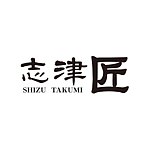A unique-looking kitchen knife that is very similar to the Santoku knife and is also an all-purpose kitchen knife. The Cultural Knife was once as popular as the Santoku, but has become less common in recent years.
The biggest difference between the Bunka Knife and the Santoku Knife is the tip of the knife. The tip of the Santoku Knife is curved downward, while the tip of the Bunka Knife is a straight line and cuts at an angle. The design of this tip also makes it more efficient when cutting meat.
What is Damascus Steel?
Originating from India, Wootz steel was smelted by Syrian craftsmen. This precious sword steel was brought to the European world through the Crusades in the Middle Ages and became a symbol of strong knives.
Miyako uses AUS8 with a hardness of HRC58.5 as the core material, and cross-laminates 8 layers of SUS410 and SUS430 reinforced stainless steel on both sides, making a total of 33 layers, each with its own unique knife pattern.
The biggest difference between the Bunka Knife and the Santoku Knife is the tip of the knife. The tip of the Santoku Knife is curved downward, while the tip of the Bunka Knife is a straight line and cuts at an angle. The design of this tip also makes it more efficient when cutting meat.
What is Damascus Steel?
Originating from India, Wootz steel was smelted by Syrian craftsmen. This precious sword steel was brought to the European world through the Crusades in the Middle Ages and became a symbol of strong knives.
Miyako uses AUS8 with a hardness of HRC58.5 as the core material, and cross-laminates 8 layers of SUS410 and SUS430 reinforced stainless steel on both sides, making a total of 33 layers, each with its own unique knife pattern.




